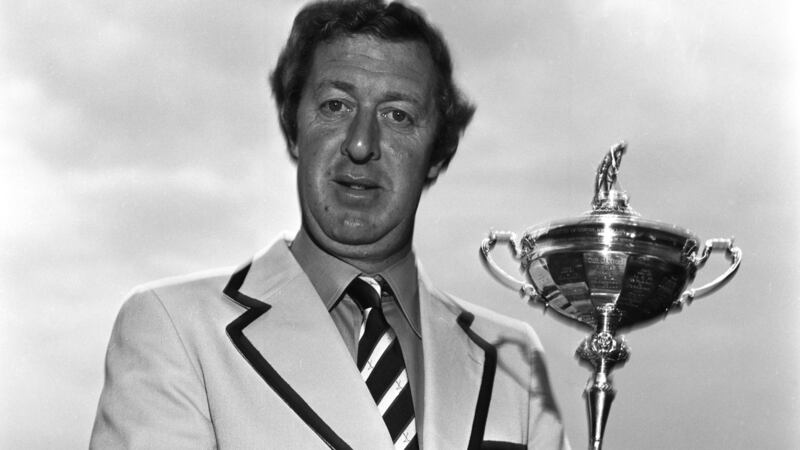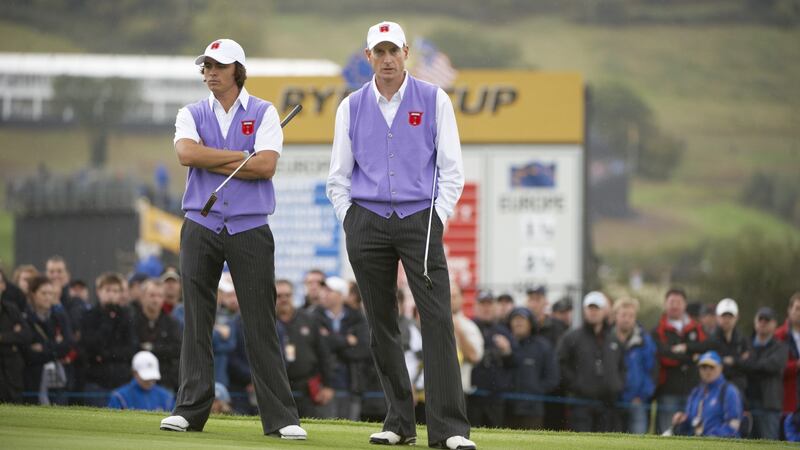Talk about a case of perfect timing for Darren Clarke, whose victory in the Sanford International on the PGA Champions Tour – his third inside a year – came with the benefit of being able to put his feet up on a short break from tour life so that he can watch “every shot” of this week’s Ryder Cup at Whistling Straits.
Clarke, of course, was Europe’s captain for the defeat to the USA at Hazeltine in 2016 but that defeat hasn’t soured in any way his love affair with the match.
“There’s nothing like a Ryder Cup, it’s the ultimate. It’s the ultimate amount of pressure, the ultimate feeling of ‘this is where you golf game is at’. If you’re on that team, you deserve to be on that team. It’s an intimidating place, the first tee, but it’s brilliant; it’s weird to describe . . . I remember Sam Torrance, before I played my first one, said to me, ‘Playing in the Ryder Cup is like having your first child; until you do, you never understand what it’s about’.
“That was as good an analogy as I’ve ever heard of what it’s like in the Ryder Cup. It’s both intimidating, exhilarating, it’s everything and, at Whistling Straits this year, you’ve got two brilliant teams. I think it’s going to be really, really close,” said Clarke.
Of the course, which Clarke played in past US PGAs there, he added: “It’s a wonderful course, a tough golf course. It’s going to be a brilliant matchplay golf course, one of the most exciting ones I think we’ll see in a long time because if your opponent hits it in the rubbish or hits it in trouble, there’s no easy bailout. You’ve still got to hit a good golf shot!”
McDowell rooting for long driver Fernandes on his debut
As one of Europe Ryder Cup captains Pádraig Harrington’s side-kicks in Whistling Straits, Graeme McDowell will likely be a busy man . . . but still intends to keep any eye out to see how his long-driving buddy “Fast” Eddie Fernandes gets on in his debut on the PGA Tour Champions event at Pebble Beach, the Pure Insurance Championship.
G-Mac used his influence with the tournament sponsors to secure a special invitation into the event for the 50-year-old American who has returned to professional golf through the Long Drive circuit.
With a club speed of 154 miles per hour and ball speed of 222 miles per hour (Phil Mickelson’s comes in the high 170s), Fernandes – who intends to try to earn a full seniors tour card at Q-School in November – will get the chance to go head-to-head with former Major winners, among them Retief Goosen, Mark O’Meara and Bernhard Langer , and showcase his power game.
But McDowell has insisted there is more to just long drives with the former collegiate player who failed to break onto the PGA Tour back in his prime. “He’s not just a long driver. He’s a very talented player with a great wedge game, a short game and just super-talented,” said McDowell.
Word of Mouth
“I could go practice all day long, but if I don’t start believing in myself and believing that I belong with all the guys at the Ryder Cup this week, then I’m doing myself a disservice” – Max Homa – after his win in the Fortinet Championship on how self-belief is an important tool if he is to kick on. Homa’s latest success moved him to a career-best 31st in the updated world rankings.
By the Numbers - 8.92
The average ranking for the USA team at the Ryder Cup is 8.92, making it the lowest ever ranking any team had since the official world rankings were started in 1986. Europe’s average world ranking for this week’s match is 30.83.
On this day: 21st September 1975
The 21st edition of the Ryder Cup at Laurel Valley Golf Club in Pennsylvania finished yet another victory for the United States, which only served to underscore the increasingly uncompetitive nature of the match. A 21-11 win for the home team meant that the Americans had won 15 of the previous 17 encounters (a whitewash only avoided by a 1957 win for Britain and Ireland and a halved match thrown into the mix in 19690.

At Laurel Valley, with Arnold Palmer as captain on a course he had co-founded, the match was over almost as soon as it begun with the USA winning all four of the first sessions foursomes. Going into Sunday’s singles, the USA held a 12 ½ to 3 ½ lead. Back in those days, there were two sessions of singles on the final day but it was all over after the first, and so it was that the only win by B&I was the dead rubber final session of eight singles.
The significance of the 21st Ryder Cup at Laurel Valley is that it proved to be the last time that a B&I team solely played the Americans. For, in seeking to make the match more competitive, it was none other than Jack Nicklaus who suggested that continental Europeans be taken on board to make for a more competitive match. The rest, as they say, is history.
Know the Rules
As you’d expect, there have been a number of rules incidents in Ryder Cups down the years. One such case came in the 2010 match at Celtic Manor, where Rickie Fowler and Jim Furyk were playing Lee Westwood and Martin Kaymer in foursomes.

On the fourth hole, Furyk’s drive found a muddy area which was ruled to be an abnormal ground condition from which they were entitled to free relief. However, rather than retrieving the ball from the mud and cleaning it, Fowler – due to play the next shot – took a different ball from his pocket and dropped it within the one club-length area from nearest point of relief. By dropping a different ball than the one Furyk had played from the tee, Fowler had substituted a ball when he was not allowed to do so which in matchplay resulted in a loss of hole penalty.












